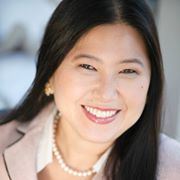NEW YORK, NY, USA, July 21, 2022 /EINPresswire.com/ — While all women are at risk for breast cancer, particularly those over 50 years old, there are particular factors that considerably raise the risk for women at any age. Understanding and becoming aware of these factors allows those at high risk to explore their options for reducing their risk. The most common risk factor is an inherited genetic mutation that significantly increases the likelihood of developing breast cancer. In some cases, inherited genetic mutations can increase the lifetime risk of developing breast cancer to more than 86%. For women who have seen multiple family members die after battling breast cancer, many decide that the best way they can reduce this risk is with a bilateral prophylactic mastectomy – the preventive removal of both breasts.
“The choice to undergo prophylactic mastectomy is challenging and may not be right for every high-risk woman,” says Dr. Constance M. Chen, plastic surgeon and breast reconstruction specialist. “In these cases women decide based on the consideration of various medical and personal factors, including the option for breast reconstruction. More now than ever we can offer women a range of reconstruction options that enable each woman to choose the best one for her.”
Evaluating risk
The National Cancer Institute statistics show that approximately 12% of women in the general population will develop breast cancer at some point in their lives. One factor that increases this risk is an inherited mutation in the BRCA1 or BRCA2 gene that prevents it from performing its proper function, which is to make proteins to suppress tumors. Women with a BRCA1 or BRCA2 mutation have a much higher lifetime risk for breast cancer, and the risk occurs at a younger age.
Other gene mutations that increase breast cancer risk for women include PALB2, CHEK2, ATM, PTEN, TP53, CDH1, and STK11. Additional factors that can increase risk include a strong family history of breast cancer, particularly in a mother, daughter, or sister diagnosed prior to age 50; Ashkenazi Jewish heritage, prior radiation to the breast, and a personal history of abnormalities in the breast tissue that are markers of increased risk such as lobular carcinoma-in-situ or atypical ductal hyperplasia.
The National Cancer Institute indicates that women at high risk of developing breast cancer can lessen their risk of developing breast cancer by 95% and those with a strong family history can reduce risk by 90% by undergoing a prophylactic mastectomy – that is, surgically removing her breasts even without a known diagnosis of breast cancer. “These risk reduction statistics for prophylactic mastectomy are persuasive,” says Dr. Chen. “But each woman is unique and many considerations will influence her decision. In addition to consultation with her doctor, she should meet with a plastic surgeon early on who can provide thorough explanations of the reconstruction options available to her and the results she can expect from each.”
Reconstruction
Breast reconstruction following prophylactic mastectomy can be done during or shortly after the mastectomy or it can be done months or even years later. A new breast can be made with artificial implants or with the woman’s own tissue, in a procedure known as autologous reconstruction.
The main benefit of implants is that the reconstructive surgery is easier and faster. It is important for women to know that implants are not a permanent solution, however, as they are foreign bodies that can cause several cosmetic and medical problems.
Dr. Chen notes that “while breast implants in the United States have a ten-year warranty, many have to be removed or replaced well before that. For women who do choose implants, however, a new method is placing the implants above the pectoral muscle where the breast tissue used to be. Either saline or silicone implants can be used. Women usually choose saline implants if safety is most important to them; women choose silicone implants if they are hoping for a softer implant. The newer cohesive gel implant, also known as “gummy bear” implants, are not as well studied, but they are firmer than traditional silicone gel implants without the safety profile of saline implants.”
Autologous reconstruction, the creation of a breast using a patient’s own tissue, provides the longest-lasting results and the highest levels of patient satisfaction. They are soft, warm, and look and feel more natural than implants because they are natural – they are made from the patient’s own tissue. The most advanced type of breast reconstruction is “perforator flap” breast reconstruction. In this case, microsurgical techniques are used to preserve the underlying muscle at the donor site while delicately transporting fat and skin along with a blood supply to create a new breast. Perforator flap surgery most often uses tissue from the abdomen but in very thin women or in women who have undergone a previous tummy tuck, the inner thighs can be used as a donor site.
“We’ve made significant advances in breast reconstructive surgery,” says Dr. Chen. “Today we can create a natural looking breast and we can reconnect nerves to try to restore feeling to the breast. Additionally, we can preserve the nipple and areola during a mastectomy so that the outer covering of the breast is the same as it was before mastectomy. While it is hard for a woman to learn that she is at high risk of developing breast cancer, at the same time, it is reassuring to know that she has options that can preserve both her health and her sense of self.”
Constance M. Chen, MD, is a board-certified plastic surgeon with special expertise in the use of innovative natural techniques to optimize medical and cosmetic outcomes for women undergoing breast reconstruction. She is Clinical Assistant Professor of Surgery (Plastic Surgery) at Weill Cornell Medical College and Clinical Assistant Professor of Surgery (Plastic Surgery) at Tulane University School of Medicine. www.constancechenmd.com

